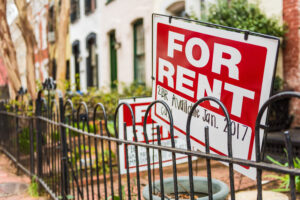There’s nothing worse than finding out that your rental has been infested with pests. From rodents to insects, knowing what steps to take to exterminate the infestation and prevent future outbreaks is a vital aspect of being a landlord. As some infestations are natural and some are caused by tenants, it’s important to understand where your responsibility lies with pest control, and know the warning signs of common pests.
Warning Signs
Unfortunately there isn’t one universal sign that shows that your property is infested with household pests. While you might discover rats through droppings and chewed up wires, you won’t discover cockroaches the same way. To identify which pest your property is infested with, you’re going to have to read up on the few warning signs common household pests have.
- Rodents
When it comes to rodents, you can usually discover them near your property’s kitchen. Whether you can see it has torn into bags or boxes, or has taken nibbles out of exposed food, this is one of the easiest ways you can find out your rental has rats or mice. Keep a look out for potential nests. This can be in piles of newspapers, in couches and carpet, and in holes in the walls. Any nook and cranny can develop into a nest, so be sure to check behind your appliances as well. Finally, if the problem is significant, you should be able to tell if you’re infested if you see droppings or smell urine.
- Squirrels
As squirrels are much bigger than most rodents, you should be able to tell right away if you’re infested. Scratching sounds in the walls are common. Check your attic or foundation. Squirrels are infamous for chewing through electrical wires, so you’re going to want to remove these pests as soon as possible.
- Cockroaches
First things first, if you see a cockroach in your property, then you’re probably infested. As roaches are nocturnal bugs, you’ll most likely discover them at night or in dark areas. You can also discover them by finding their droppings or eggs (which come in light-brown, cylindrical egg cases). Finally, just like with rodents, if you smell something musty then you’re going to need to investigate more.
- Termites
While termites are a direct threat to your rental property, they can go undetectable for a long time. As the pests eat and burrow through wood, you can find them in your rental’s walls, floors, and foundation. They often enter into many homes through cracked or unsealed foundations.
- Carpenter Ants
While a few ants are relatively normal in a home, carpenter ants are another story. Just like termites, they burrow and chew through wet, rotted wood and can cause serious damages to your property. If you’re close enough to the hive, then you might even be able to hear them, but in many cases you’ll only discover them if you see them or the damage they’ve inflicted.
Depending on your geographical location and climate, some pests might even be more prevalent in your rental’s particular area. For example, locations with high humidity are more susceptible to bedbugs than dry, desert climates. Additionally, certain areas on your property might be more vulnerable to pest infestations, so regularly check your foundations, attics, and any other areas that might be moist and dark.
Whose responsibility is it?
While in some cases, infestations are drawn to your rental because the tenant insufficiently kept clean conditions, pests from the surrounding area should be expected. For example, if your property is in a remote area next to tall grass, it’s very likely you’ll attract rodents. Getting rid of (and warding off) these natural pests is your responsibility.
For pests that are drawn to dirty conditions caused by the tenant, then the tenant might be financially responsible for eradicating them. That being said, as the landlord, you want to protect your property from significant damages and you might not want to leave the pest control to tenants who attracted the infestation in the first place. Ultimately, you’re going to need to review your state and local pest control laws, and write out pest responsibility in your lease agreement.
No landlord wants their property to have a pest problem. By knowing the warning signs, you prevent significant damages from occurring and further protect your property and tenants. When dealing with pest control, contact a professional and review your state’s pest control notice requirements. In California, starting this year, landlords must notify the tenants 24 hours before applying any pesticides (even over-the-counter ones).
What pests are common in your area? Have you ever had significant damages caused by pests? Let us know your experiences in the comments section below & be sure to subscribe!







